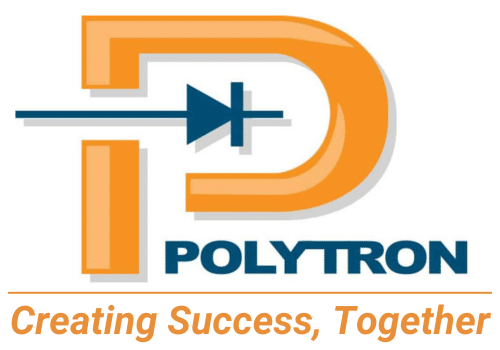Inefficient bottling lines and aging line assets seemed to be creating excessive downtime and waste for one beverage manufacturer, resulting in pressure to meet the growing market demand without increasing expenses.
With operation performance unknown, forecasting the ability to meet increased market demand is ineffective. Building another plant seemed unavoidable, but the task would be time-consuming and costly.
To meet the increasing market demand, solution phases guided the manufacturer to their goal and a manufacturing operations management (MOM) solution was designed. Upgraded digital data capturing allowed for real-time, accurate production data to support decision clarity. In just three months, the performance covered the cost of the project, delaying the need for new plant construction and successfully exceeding the company’s goals.
Challenge |
Solution |
Results |
| With market demand increasing, the manufacturer was unable to measure operations performance or to forecast production capacity. New construction seemed inevitable but would be expensive and slow to solve the problem. | Establish solution phases to guide the manufacturer toward the goals of the project, and design a manufacturing operations management (MoM) system to meet these goals. | Digital data capture eliminates inefficient paper-based records and workflows and enables accurate and up-to-date production data across management and all shifts for decision clarity. Improved performance covered the cost of the project in only three months and delayed need for new construction. |
The Project
 Unknown Operation Performance
Unknown Operation Performance
A beverage manufacturer CEO was under pressure to meet growing market demand without increasing expenses.
Unfortunately, bottling lines were operating beneath peak efficiency, and aging line assets were creating excessive downtime and waste – or so they thought.
The bottler’s leadership didn’t actually know how well their operations were performing and couldn’t effectively forecast their ability to meet increasing demand. They knew they would need to build another plant – but how soon? Construction would cost $50 million – and take 18 to 24 months, slowing progress toward meeting market demand.
Finding the True Problems
The Vice President of Information Services knew he could not provide the data the executive team needed to help facilitate their decisions. What were the true problems? And where were they?
Manually reported OEE was inaccurate, and he lacked the data to determine true utilization. Another issue of underperforming assets were the extra staff that had to be hired to firefight issues. The VP needed to be able to better support maintenance and engineering with increased efficiency.
The VP and his team did not know how to get more out of the existing assets, how much improvement they could realize, or how to start.
They challenged themselves to get more output from the lines already in use, while extending service life. To do so, they needed data hidden in the machines to point them to the most effective action.
The paper-based operator records provided no real-time, actionable insights to take corrective action for improvement. For a smarter company future, the upgrades had to begin in this plant and be replicated at scale in future plants.
Solution Architecture and Implementation Provider
The beverage manufacturer needed a solution that could help them assess the current state, envision a future state, then develop and deploy the technology to transport them there.
The VP began a search for a provider that could help them “talk” with their machines and get the insights they needed. They chose Polytron as a consultant and solution provider for both solution architecture and implementation.
Assessment of Core Issues
Out of the gate, an assessment helped identify the core issues for the project related to a lack of realtime data, insight, and communication:
- Manual recording of data was unreliable, not always accurate and untimely
- Real-time actionable information was not readily available
- Rest of the organization lacked visibility into how manufacturing was performing
- Lack of integration between the various data silos
Outlining Goals to Achieve Desired Results
To deliver the desired results as efficiently and effectively as possible, the Polytron team implemented a balanced approach of automatic data collection from most of the machine PLCs and smart IIoT devices in areas where PLCs did not exist. Utilizing the technology platform in conjunction with the smart IIoT devices, Polytron sought to:
- Increase production throughput
- Provide real-time actionable information to drive manufacturing improvements
- Provide manufacturing visibility throughout the organization
- Provide a platform for Digital Transformation that supports enterprise growth
- Integrate data from multiple systems to provide a single version of the truth
- Migrate legacy data silo applications into the new platform
Accomplishing these goals delivers real-time data and feedback with a minimal footprint, no production disruption, and no need for updates to connectivity or other infrastructure.
Solution Phases Delivered ROI
The implemented technology served as a MOM platform that helped integrate, aggregate, contextualize, display, and report actionable insights. Multiple solutions were implemented using the platform over a two-year period. Each phase delivered an ROI that helped fuel the subsequent phase.
- Performance management for three filling lines with automatic data collection from 10+ PLCs and utilizing standard user interfaces, dashboards, and reports. Several PLCs were upgraded to have Ethernet I/P capability. Polytron’s PLC System Tracking fi le captured machine state, production/reject counts, and the fi rst fault for each machine.
- ERP Integration for downloading production schedules automatically.
- IIoT Smart Devices implemented in Empty Bottle Area to count bottles where no PLC existed.
- Performance management for Line 4 and extension of data collection to additional machines.
- Historian for process and packaging time-based data analysis.
- Maintenance management implemented to replace a legacy point solution that acted in a siloed fashion, was unintuitive, and had long since grown obsolete.
- Rollout to the second factory with all of the functionality listed above.
- Scoreboards across many machine centers for real-time shift performance.
Planning for the Future
The beverage manufacturer is evaluating using the platform for Warehouse Management, Quality Management with SPC, Finite Scheduling, Visual Work ow and expanding the technology to all of the manufacturing assets in both facilities. The project enabled the manufacturer to plan for the future. With its modular nature and seamless extensibility, the manufacturer knew the platform would easily grow with them and allow for expansion into other functional areas and multi-site deployments.
Results
A MOM solution is a small investment compared to a new line – or even a new plant. With the accurate data presented to the organization, the manufacturer was able to realize signi cant improvement in their line performance.
- Measurable ROI across all phases including 3-month payback on Phase 1
- Out-of-the-box user interface screens, dashboards, and reports available on tablets, large production monitors, office computers, and mobile devices
- Increased output at factory one, enabled construction of the second factory to be postponed by 18 months
- Platform for rapid and cost-effective deployment of any new requirements




